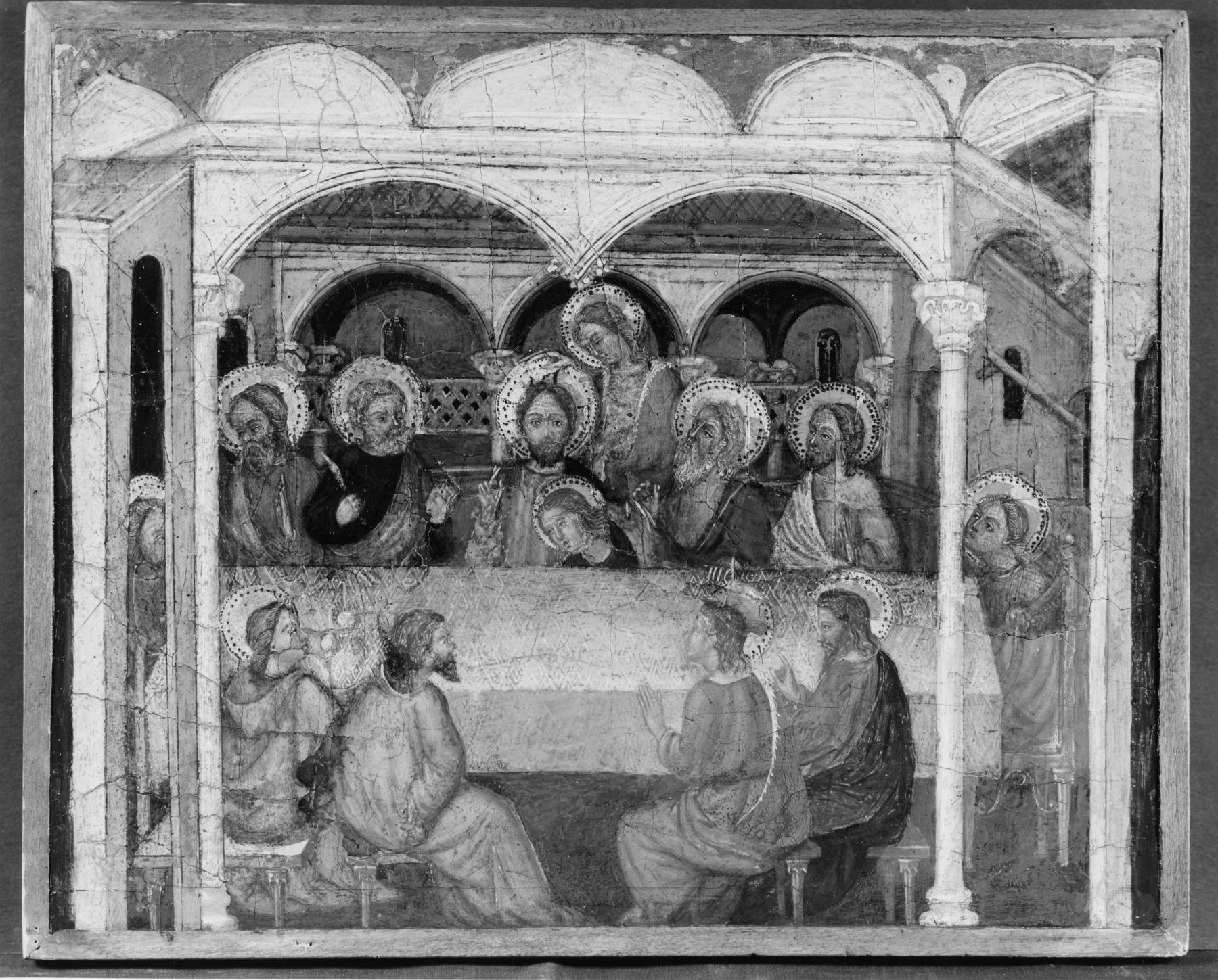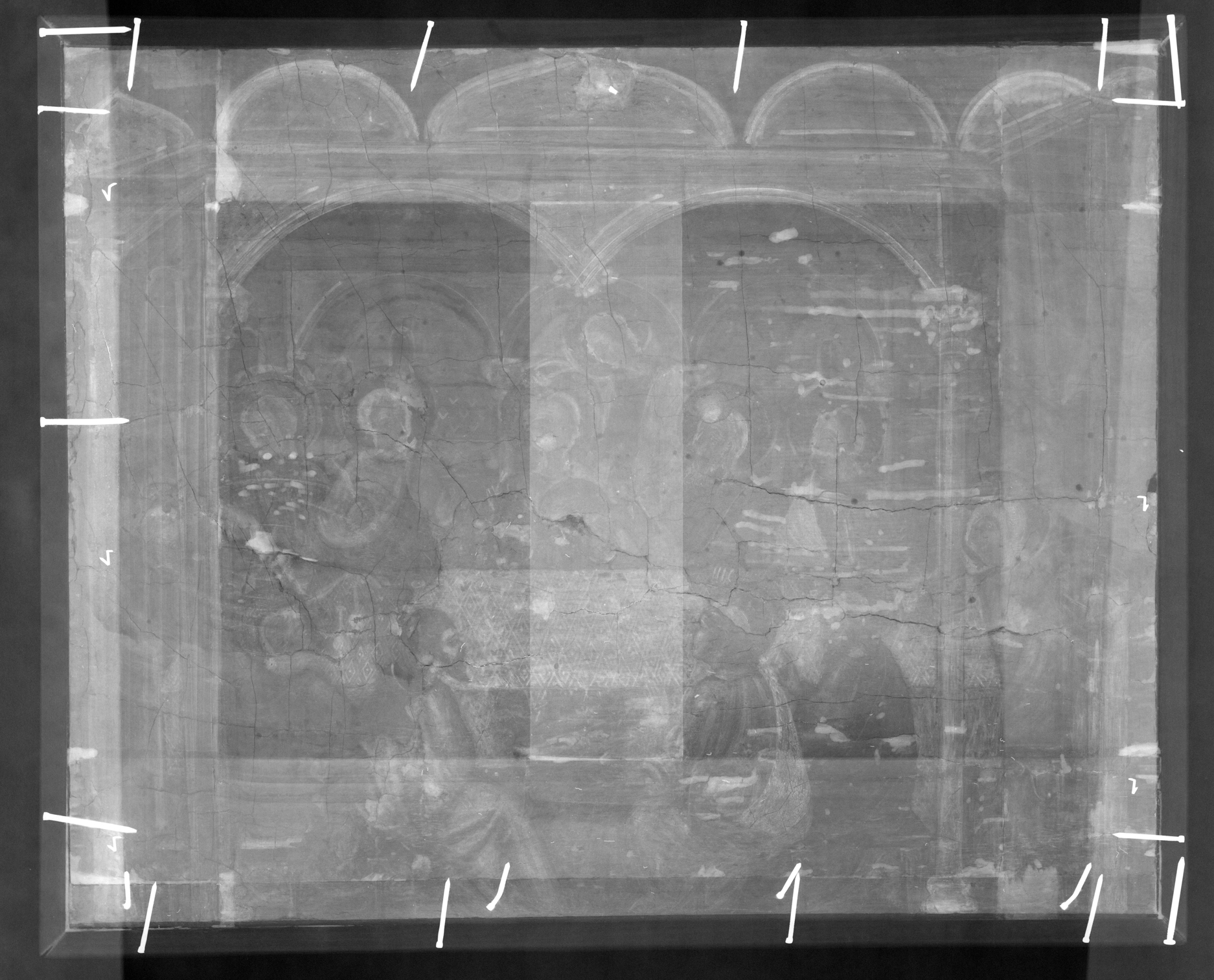Last Supper
(Renaissance Europe )
This small panel depicts the New Testament episode the “Last Supper”—Christ’s final meal with his twelve disciples before his arrest and subsequent crucifixion. Christ is seated at the center of the table raising his hand in a gesture of blessing. The disciple who betrayed him, Judas, is seated on the opposite end of the table, notably without a halo and holding a bag of money behind his back. The money is the payment Judas received for turning Christ in to the Roman authorities.
The panel was originally joined by others showing additional scenes from the life of Christ. At least one other, depicting "Christ in the Garden of Gethsemane", survives in a private collection. The panels were certainly parts of a larger altarpiece and perhaps come from its “predella,” or illustrated base.
Antonio Orsini was formerly known as the Master of the Carminati Coronation, after a painting of the "Coronation of the Virgin" in the Carminati Collection, Milan. Born in Venice to a Milanese family, Orsini is documented between 1432 and 1491 (when he died) in the central Italian city Ferrara. His work maintained the compostional approach of the late 1300s in his disregard for rationally constructed space using the system of linear perspective, which had become conventional throughout most of Italy by the mid-1400s. Note, for instance, the implausible construction of the building in the Walters’ panel.
Provenance
Provenance (from the French provenir, 'to come from/forth') is the chronology of the ownership, custody, or location of a historical object. Learn more about provenance at the Walters.
Don Marcello Massarenti Collection, Rome [date and mode of acquisition unknown] [1881 catalogue: no. 38; 1897 catalogue: no. 37, as Pesellino]; Henry Walters, Baltimore, 1902, by purchase; Walters Art Museum, 1931, by bequest.
Geographies
Italy, Emilia (Place of Origin)
Measurements
Painted surface H: 9 1/4 x W: 11 5/8 x D excluding modern reinforcement: 1/4 in. (23.5 x 29.6 x 0.7 cm)
Credit Line
Acquired by Henry Walters with the Massarenti Collection, 1902
Location in Museum
Not on view
Accession Number
In libraries, galleries, museums, and archives, an accession number is a unique identifier assigned to each object in the collection.
In libraries, galleries, museums, and archives, an accession number is a unique identifier assigned to each object in the collection.
37.753




